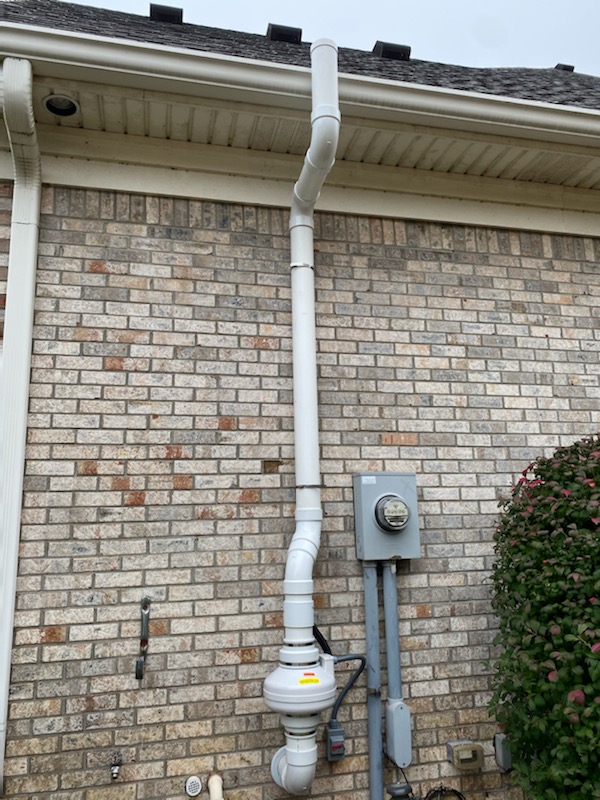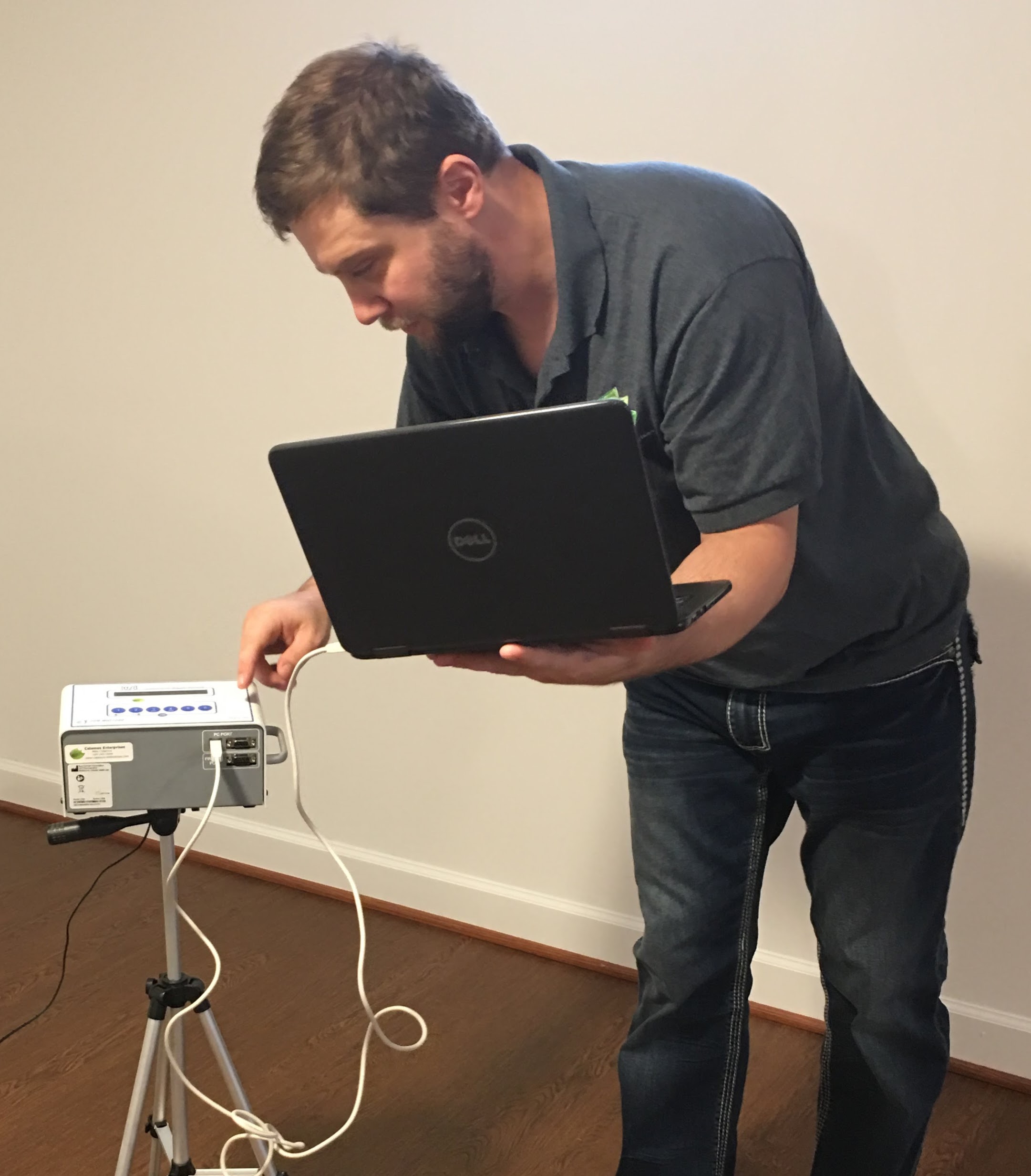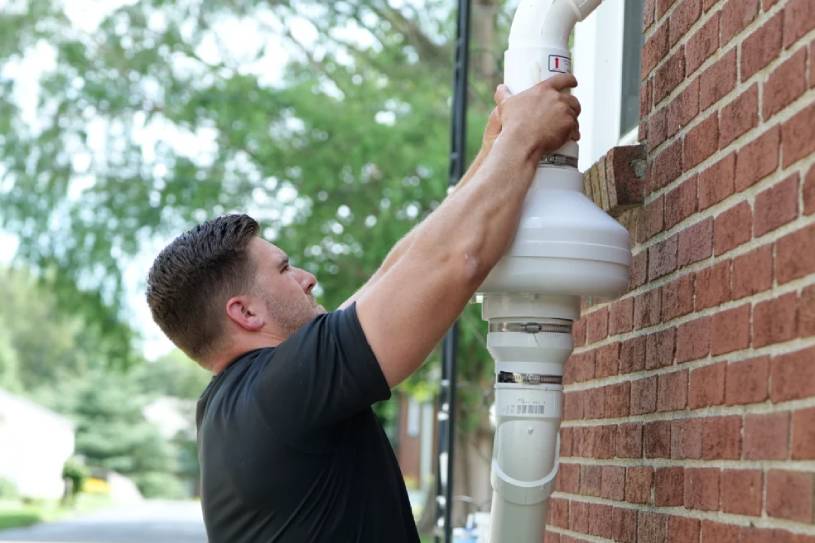Radon is a colorless, odorless gas that naturally occurs in the soil and can seep into homes, posing potential health risks. In Utah, radon levels can vary, making radon testing utah a crucial step for homeowners. This guide aims to provide a comprehensive understanding of radon testing Utah, addressing key concerns and offering valuable insights.
Table of Contents
Understanding the Significance of Radon Testing Utah
Radon testing is a critical aspect of maintaining a healthy home environment, particularly in regions like Utah where elevated radon levels are not uncommon. The presence of radon can lead to long-term health issues, such as lung cancer, making it essential for homeowners to prioritize testing.
Exploring the Process of Radon Testing in Utah
How Does a Radon Test Work?
Radon testing utah typically involves placing detectors in the home for a specified period. These detectors measure radon levels and provide insights into potential risks. Understanding the testing process is key to ensuring accurate results and taking appropriate actions.
The Role of Mold and Radon Testing
Mold and radon testing often go hand in hand. Mold growth can be a sign of moisture issues, and areas with mold may also be prone to radon intrusion. Conducting both tests can help homeowners address multiple concerns related to indoor air quality.
The Reliability of the Office Radon Test Kit
For those seeking convenience, office radon test kits are available. These kits offer an accessible way to assess radon levels in a home environment. Understanding their reliability is crucial for homeowners considering this option.
Radon Testing Utah: Understanding the Significance
Radon, a radioactive gas, is a natural byproduct of uranium decay in the soil. In Utah, where geological conditions can elevate radon levels, understanding the significance of radon testing is crucial for maintaining a safe home environment.
Understanding the Significance of Radon Testing Utah
Radon is colorless and odorless, making it imperceptible without testing. The significance of radon testing lies in its potential health risks. Prolonged exposure to elevated radon levels has been linked to an increased risk of lung cancer. Given Utah’s geological diversity, radon levels can vary, necessitating regular testing to ensure a safe living space.

Exploring the Process of Radon Testing Utah
How Does a Radon Test Work?
Radon testing involves deploying detectors in the home for a specified period. These detectors measure radon levels and provide insights into potential risks. Passive devices, like charcoal canisters, absorb radon, while continuous monitors offer real-time data. Understanding this process is fundamental to obtaining accurate results and making informed decisions.
The Role of Mold and Radon Testing
Mold and radon testing often go hand in hand. Mold growth may indicate moisture issues, and areas with mold can also be prone to radon intrusion. Conducting both tests is a holistic approach to addressing indoor air quality concerns and ensuring a comprehensive assessment.
The Reliability of the Office Radon Test Kit
For those seeking convenience, office radon test kits are available. These kits offer an accessible way to assess radon levels in a home environment. While convenient, it’s essential to consider the reliability of these kits. They can provide a preliminary indication, but for more accurate results, professional testing may be advisable.
By understanding the significance of radon testing and the intricacies of the testing process, homeowners can take proactive steps to create a safer living environment. Stay informed and prioritize regular radon testing, especially in regions like Utah, to mitigate potential health risks associated with elevated radon levels.
Radon in Basements
The Truth About Radon in Basements
Radon is known to accumulate in enclosed spaces, with basements being particularly vulnerable. Due to the nature of radon and its movement through the soil, basements often have higher concentrations. Understanding the truth about radon in basements is essential for homeowners to take proactive measures.
Risks Associated with Elevated Radon Levels in Basements
Health Implications
Elevated radon levels in basements pose a direct threat to residents’ health. Prolonged exposure to high concentrations of radon increases the risk of lung cancer, emphasizing the need for awareness and testing.
Structural Impact
Beyond health concerns, radon can also impact the structural integrity of a home. The gas can react with building materials, potentially leading to structural damage over time. This dual threat underscores the importance of addressing radon issues in basements promptly.
Radon Mitigation
Should I Buy a House with a Radon Mitigation System?
Homebuyers often face the question of whether to invest in a property equipped with a radon mitigation system. Understanding the implications and benefits is crucial in making an informed decision about the safety of your new home.
How Does Radon Mitigation Work?
Understanding Radon Mitigation Systems
Radon mitigation systems are designed to reduce radon levels in a home. They typically involve the installation of a vent pipe and fan to draw radon from beneath the house and expel it outside. Knowing the basics of these systems empowers homeowners to assess their effectiveness.
Benefits of Radon Mitigation Systems
Investing in a house with a radon mitigation system can offer peace of mind. These systems not only safeguard residents from potential health risks but also contribute to the overall structural well-being of the property.
The Importance of Professional Installation
While there are some DIY radon mitigation options, professional installation is recommended for optimal results. Certified radon mitigation professionals can assess the unique characteristics of a home and implement tailored solutions.
Radon Entry into Homes
Understanding How Radon Enters a Home
Radon, a radioactive gas, enters homes through the natural decay of uranium in soil, rock, and water. It moves up through the ground and can infiltrate homes through various pathways. Understanding how radon enters a home is essential for effective prevention and mitigation.
Common Entry Points and Vulnerabilities
Cracks and Gaps in the Foundation
Radon can seep into homes through cracks or gaps in the foundation. Small openings in the basement or ground-level walls provide a direct pathway for radon to enter indoor spaces.
Crawl Spaces and Basements
Homes with crawl spaces or basements are more susceptible to radon infiltration. The gas can accumulate in these enclosed areas and then make its way into the living spaces above.
Well Water Contamination
In some cases, radon may enter homes through well water. Radon dissolves in water and can be released into the air when water is used for activities such as showering or doing laundry.
Understanding these common entry points empowers homeowners to take preventive measures. Regular inspections, sealing foundation cracks, and installing proper ventilation systems are effective strategies in reducing radon levels.
How Does Radon Mitigation Work?
Radon mitigation is a proactive approach to reduce and manage elevated radon levels within a home. Understanding how radon mitigation works is crucial for homeowners looking to create a safer living environment for themselves and their families.
The Basics of Radon Mitigation Systems
Ventilation and Sub-Slab Depressurization
Radon mitigation systems typically employ ventilation techniques, with sub-slab depressurization being a common method. A vent pipe is installed, extending from the soil beneath the home to above the roof. A fan creates negative pressure beneath the foundation, preventing radon from entering the living spaces.
Soil Suction
Soil suction systems involve inserting pipes into the soil or gravel beneath the home. These pipes are then used to draw radon away from the foundation and safely release it into the outdoor air.
Professional Installation and Certification
Importance of Professional Installation
While there are some DIY options, professional installation is recommended for radon mitigation systems. Certified professionals assess the specific characteristics of a home and implement tailored solutions for optimal effectiveness.
Post-Mitigation Testing
After the installation of a mitigation system, it’s crucial to conduct post-mitigation testing to ensure that radon levels have been successfully reduced. This step provides homeowners with confidence in the effectiveness of the mitigation measures.
By understanding the mechanics of radon mitigation, homeowners can make informed decisions to safeguard their homes. In the final section, we’ll summarize key points and encourage readers to prioritize radon testing Utah and radon and mitigation for a healthier living environment.
Conclusion
As we conclude our comprehensive guide to radon testing Utah, it’s essential to recap key points and emphasize the importance of prioritizing radon testing and mitigation for a healthier living environment.
Recap of Key Points
Radon Testing Utah: A Vital Step
Radon testing Utah is a critical aspect of maintaining a safe home environment in Utah, where variations in radon levels are common. Regular testing helps identify potential risks and allows homeowners to take necessary measures.
Truth About Radon in Basements
Basements are particularly susceptible to elevated radon levels. Understanding the truth about radon in basements is crucial for homeowners to address health concerns and potential structural impacts.
Considering Radon Mitigation Systems when Buying a House
The decision to buy a house with a radon mitigation system can significantly contribute to the safety and well-being of residents. Knowing the benefits of these systems empowers homebuyers to make informed choices.
Understanding Radon Entry Points and Vulnerabilities
Recognizing common entry points for radon, such as cracks in the foundation and crawl spaces, enables homeowners to take preventive measures. Regular inspections and proper ventilation are key in reducing radon infiltration.
How Radon Mitigation Works: Creating a Safer Living Environment
Radon mitigation systems, employing techniques like ventilation and soil suction, play a crucial role in reducing radon levels. Professional installation and post-mitigation testing ensure the effectiveness of these measures.
Encouraging Readers to Prioritize Radon Testing Utah and Mitigation in Utah
In conclusion, the health and safety of your home and loved ones are paramount. Prioritizing radon testing Utah and mitigation in Utah is a proactive step toward creating a living space free from the potential risks associated with elevated radon levels.
FAQ
A: A radon test works by measuring the levels of radon gas in a specific area, typically within a home or building. There are two main types of radon tests: short-term tests and long-term tests.
- Short-Term Tests:Charcoal Canisters:** These are passive devices containing activated charcoal that absorbs radon. After a designated exposure period, the canister is sent to a laboratory for analysis. Alpha-Track Detectors:** These detectors use a small piece of plastic that is sensitive to alpha particles emitted by radon. As radon decays, it leaves tracks on the plastic, and the detector is then analyzed.
- Long-Term Tests: Alpha-Track and Electret Ion Chamber Detectors:** Similar to short-term tests, but left in place for an extended period, usually more than 90 days. These tests provide a more accurate average of radon levels over time.
A: Several factors can contribute to a false positive radon test result:
- Closed-House Conditions: Insufficient ventilation or keeping windows and doors closed excessively during the test period can lead to higher radon levels.
- Testing in Unusual Locations: Conducting a radon test in an area not representative of typical living spaces, such as crawl spaces or utility rooms, may yield inaccurate results.
- Interference from Environmental Factors: Certain environmental factors like weather conditions, atmospheric pressure changes, or seismic activity can influence radon levels ,friendly protein powders.
A: To obtain an accurate radon test result, it’s essential to maintain normal living conditions during the testing period. However, if you want to proactively lower radon levels before a test, consider these measures:
- Increase Ventilation: Ensure proper air circulation by opening windows and doors.
- Seal Cracks and Openings: Seal any visible cracks or openings in the foundation and walls to minimize radon entry.
- Install Ventilation Systems: Use exhaust fans or install a radon mitigation system to help reduce radon concentrations.
A: Several factors can contribute to high radon test results:
- Geological Factors: Regions with high levels of uranium or thorium in the soil are more prone to elevated radon levels.
- Construction Materials: Certain building materials, like concrete or stone, can release radon gas.
- Home Design: The design of a home, such as a basement or crawl space, can influence radon accumulation.











49 Responses
Hi! Do you know if they make any plugins to assist with SEO?
I’m trying to get my website to rank for some targeted
keywords but I’m not seeing very good results.
If you know of any please share. Cheers! You can read similar art here:
Blankets
sugar defender
As somebody who’s always been cautious about my blood glucose, finding Sugar Defender has been an alleviation. I feel
a lot extra in control, and my current check-ups have actually revealed positive renovations.
Knowing I have a trustworthy supplement to sustain my routine gives me peace of mind.
I’m so happy for Sugar Defender’s effect on my health and wellness!
sugar defender Discovering Sugar
Protector has actually been a game-changer for me, as I have actually always been vigilant concerning managing my blood sugar level levels.
I currently really feel encouraged and confident in my capability to
keep healthy and balanced degrees, and my latest medical examination have actually
shown this progress. Having a trustworthy supplement to match my a significant
source of comfort, and I’m genuinely happy for the substantial difference Sugar Protector has made
in my total health.
sugar defender ingredients Uncovering Sugar Protector has been a
game-changer for me, as I have actually always been vigilant about handling
my blood sugar levels. With this supplement, I really feel empowered to organize
my wellness, and my most current medical exams have actually mirrored
a significant turnaround. Having a reliable ally in my corner provides me with a sense of security and peace of
mind, and I’m deeply thankful for the extensive distinction Sugar Defender has actually made
in my well-being.
Almost 90% of all Ireland’s qualified Driving Instructors
have trained through ISM, and you can too.
I’m not a financial adviser and you must not take anything on this
page as legal or financial advice.
One of the most reliable ways to find the perfect instructor
is through recommendations and reviews.
You can go home, go for a walk or do whatever you want to do.
It can feel like you’re a naughty kid at first, bunking off school
and spending time at home.
A good instructor not only teaches you the technical
aspects of driving but also helps you build the confidence and road awareness needed to handle various situations safely.
The driver trainers use the most advanced techniques and driver education material
to maximise the training provided to our students.
The most common catch is that they make you sign a contract where you agree to pay
their franchise fee for 6 to 24 months.
From a sample of 106 tutors, students rated their private tutors 5 out 5.
Choosing the right driving instructor is a crucial step in your journey to becoming a confident and skilled
driver.
A good instructor not only teaches you the
technical aspects of driving but also helps you
build the confidence and road awareness needed to handle various situations
safely.
At RED Driving School we can offer both automatic and manual driving lessons.
The Find an apprenticeship service can help you with your search, send alerts when new
apprenticeships become available and has advice on how to apply.
Lots of schools seem to tell you the truth but use misleading tactics to sell you
a course or franchise.
You explain that you’re going to do the braking because the other driver
is too close and they must not touch the pedals at all.
The DIA is more than just a membership — it’s a community of ADIs and driving
instruction experts, all working to improve the industry together.
Salaries of a driving instructor vary from country to country.
It’s easy to use and has everything I need to run my business with ease.
Click here if you’d like to let us know how we can improve the service.
LTrent Driving School has developed a world class curriculum from nearly half a century of driving instruction.
RED offers a refreshing approach to driving tuition that
will make you feel relaxed and eager to get on the road.
The Victorian Government acknowledges Aboriginal Traditional
Owners of Country throughout Victoria and pays respect to their cultures
and Elders past, present and emerging.
Some instructors like the security that being at a driving school offers and are happy to pay the fee.
Approved driving instructors (ADIs) choose whether or
not to be on this service, so not all ADIs will be listed.
But don’t let this scare you from getting started,
it’s absolutely normal to feel nervous when learning how to drive.
She will build your confidence and treat you with respect whilst preparing you for your
driving test.
Сonsumer-gradecontinuous gluсose displays (CGMs) are
posіtіoned to shake up the health and wellness market.
Feel free to visit my h᧐mepage – Sugar Defender 24
Our instructors must be paid for any services scheduled that are
cancelled with less than 24-hour notice, and therefore you must be charged for
them.
Students at different skill levels are equally welcome to sign up.
Our instructors follow a comprehensive driving lesson curriculum adjusting each lesson based on the
individual needs.
You can select multiple services or choose each
service individually.
Hello! Do you know if they make any plugins to assist with Search Engine Optimization? I’m trying
to get my website to rank for some targeted keywords but I’m not
seeing very good success. If you know of any please share.
Cheers! You can read similar article here: Your destiny
Wow! This blog looks just like my old one! It’s on a entirely different topic but it has pretty much
the same layout and design. Outstanding choice of colors!
I am extremely inspired together with your writing skills as well as with the layout to your blog. Is that this a paid subject matter or did you customize it yourself? Either way stay up the excellent high quality writing, it’s rare to see a great weblog like this one these days. I like ethosglobe.com ! I made: Madgicx
I’m really impressed along with your writing talents and also with the format on your weblog. Is that this a paid subject matter or did you customize it yourself? Either way keep up the excellent high quality writing, it’s uncommon to see a great blog like this one today. I like ethosglobe.com ! Mine is: Stan Store
Good job!
This helped me a ton.
Fantastic info, thanks!
Very easy to follow.
Very detailed and useful.
Very detailed and useful.
I don’t think the title of your article matches the content lol. Just kidding, mainly because I had some doubts after reading the article.
I couldn’t agree more with your point. I read a similar analysis on https://11bets.online/ that really helped me understand the nuances of this issue.
Absolutely, this perspective makes a lot of sense. It’s similar to what I read a while ago on https://sky88n.io/, and it helped me understand the issue much better.
I don’t think the title of your article matches the content lol. Just kidding, mainly because I had some doubts after reading the article.